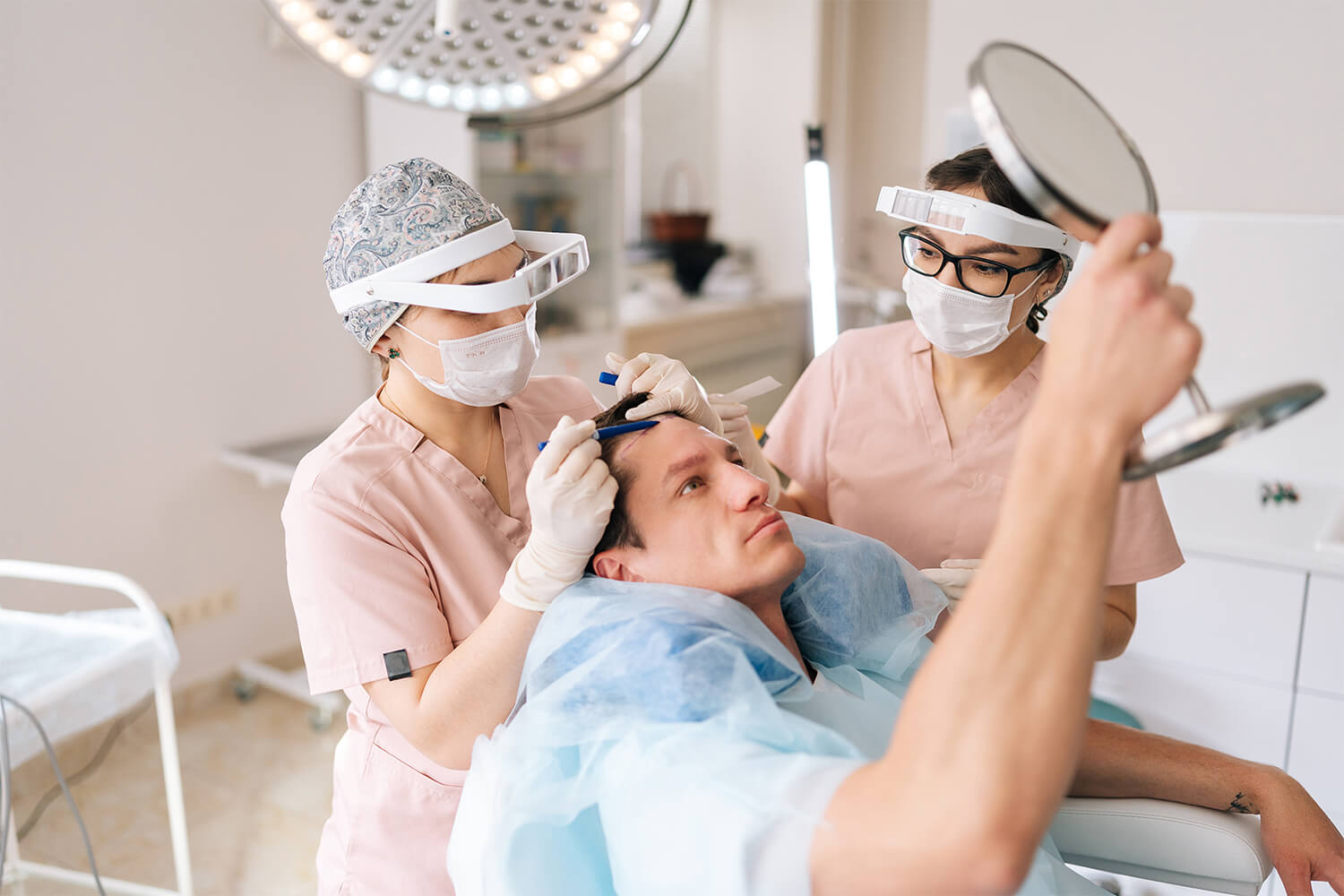Are Hair Transplants Safe?
Hair transplants have become an increasingly popular solution for people experiencing hair loss, offering a permanent and natural-looking result. But as with any medical procedure, safety is a key concern for prospective patients.
So, how safe are hair transplants? The short answer is: when performed by qualified professionals under sterile conditions, hair transplants are generally very safe. However, like any surgical procedure, they are not without potential risks and considerations.
Let’s break down the safety of hair transplant procedures, what patients should expect, and how to reduce risks.

What Is a Hair Transplant?
A hair transplant is a minimally invasive surgical procedure that involves moving hair follicles from a donor area (usually the back or sides of the scalp) to areas affected by hair loss (commonly the crown, hairline, or temples). The two most common techniques are:
FUE (Follicular Unit Extraction): Individual hair follicles are extracted and transplanted.
FUT (Follicular Unit Transplantation): A strip of scalp is removed, and follicles are dissected and implanted.
Both methods are outpatient procedures and require only local anesthesia.
How Safe Are Hair Transplants?
Hair transplants are considered low-risk when performed by an experienced and licensed surgeon in a medically approved facility. The technology and techniques have advanced significantly in recent years, making the process safer and more comfortable than ever.
Safety Factors to Consider:
Type of Clinic and Surgeon
Choosing a certified clinic and a trained, reputable surgeon is the most important factor for ensuring safety. The risks increase dramatically when procedures are done by unqualified practitioners or in non-medical environments.Patient Health
A proper medical evaluation is necessary. People with underlying conditions such as bleeding disorders, autoimmune diseases, or uncontrolled diabetes may have a higher risk of complications.Surgical Environment
The procedure must be conducted in a sterile environment to prevent infections and ensure proper healing.
Possible Side Effects and Complications
Although most patients undergo hair transplant procedures without serious issues, it’s still a surgical procedure and comes with potential side effects:
Swelling: Especially in the forehead or around the eyes, usually subsides in a few days.
Redness and irritation: Common and temporary, especially in the recipient area.
Scabbing and crusting: Normal in the first 7–14 days post-surgery.
Itching: A common symptom during the healing process.
Temporary shock loss: Some native or transplanted hair may fall out before regrowing.
Rare complications may include:
Infection: Avoided with proper hygiene and antibiotics if necessary.
Scarring: More common with FUT than FUE.
Unnatural hair growth: If the transplant is not done properly.
Cysts or ingrown hairs: Occasionally occur if grafts are placed incorrectly.
How to Minimize Risks
You can significantly reduce the risk of complications by:
Choosing a licensed clinic with a strong track record
Following pre-operative and post-operative instructions
Avoiding smoking and alcohol during recovery
Not touching, scratching, or washing your scalp too early
Using prescribed medications to support healing and prevent infection
Is the Procedure Painful?
Hair transplants are usually performed under local anesthesia, which means patients stay awake but feel no pain in the scalp. Some discomfort, tightness, or numbness may be felt afterward, but this is typically mild and manageable with prescribed pain relief.
Long-Term Safety
Once the transplanted hair follicles settle and begin to grow, they behave like your natural hair. Most patients experience permanent results, with no need for ongoing surgical treatments.
Hair transplants do not affect your internal health or systemic functions, making them a very safe long-term option for suitable candidates.
Who Should Not Get a Hair Transplant?
A hair transplant may not be suitable for individuals who:
Are under 25 and experiencing rapid, unpredictable hair loss
Have insufficient donor hair
Suffer from active scalp infections or skin disorders
Have unrealistic expectations
A thorough consultation with a qualified specialist is essential to determine eligibility.
Final Thoughts
Hair transplants are generally safe, effective, and life-changing when performed under the right conditions. While minor side effects are to be expected, serious complications are rare — especially when patients choose experienced clinics and follow recovery guidelines closely.
If you’re considering a hair transplant, make sure to research your clinic carefully, ask questions, and schedule a professional consultation. Safety starts with informed decision-making.
